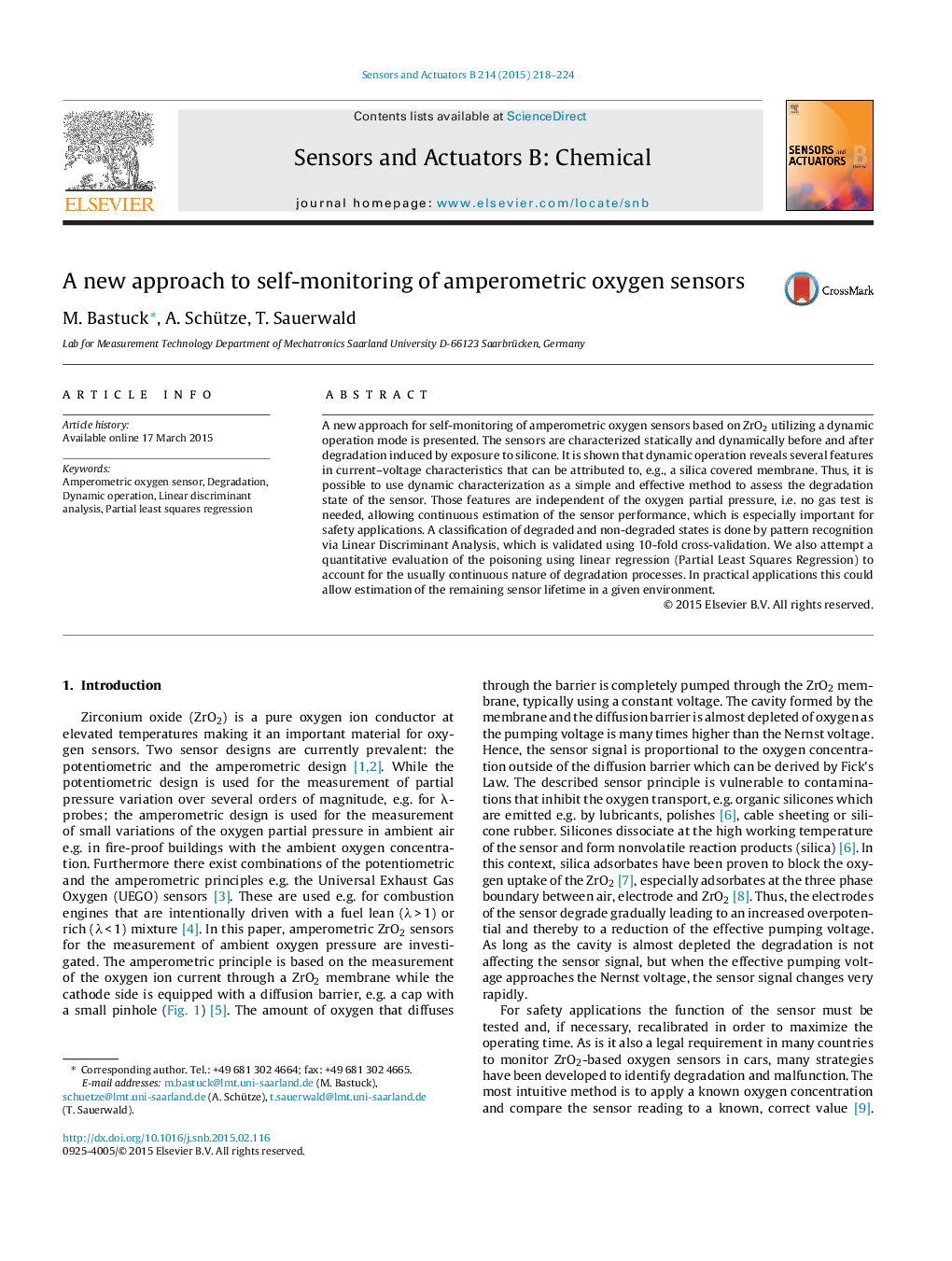| Article ID | Journal | Published Year | Pages | File Type |
|---|---|---|---|---|
| 741706 | Sensors and Actuators B: Chemical | 2015 | 7 Pages |
•We present a new method for self-monitoring of amperometric oxygen sensors.•Degradation of the sensor causes changes in its dynamic characteristic.•Pattern recognition is able to discriminate different states of degradation.•The result is independent from the oxygen concentration.
A new approach for self-monitoring of amperometric oxygen sensors based on ZrO2 utilizing a dynamic operation mode is presented. The sensors are characterized statically and dynamically before and after degradation induced by exposure to silicone. It is shown that dynamic operation reveals several features in current–voltage characteristics that can be attributed to, e.g., a silica covered membrane. Thus, it is possible to use dynamic characterization as a simple and effective method to assess the degradation state of the sensor. Those features are independent of the oxygen partial pressure, i.e. no gas test is needed, allowing continuous estimation of the sensor performance, which is especially important for safety applications. A classification of degraded and non-degraded states is done by pattern recognition via Linear Discriminant Analysis, which is validated using 10-fold cross-validation. We also attempt a quantitative evaluation of the poisoning using linear regression (Partial Least Squares Regression) to account for the usually continuous nature of degradation processes. In practical applications this could allow estimation of the remaining sensor lifetime in a given environment.
